


Right now you are connected to the eduroam-install network. This network gives you the necessary information and software to access the eduroam network of UAlg.
Eduroam is a international network that provides you internet access. If you are a student, researcher or staff member of a institution part of Eduroam then you can access internet anywhere in the world where Eduroam hotspots exist.
If you find a typo or have a sugestion for this page, please let us know by sending an email to helpmail@ualg.pt.
Note: You can always come back to this page for reference at wireless.ualg.pt
If you are from another university/institution and already had Eduroam working before, then it should work automatically when you connect to the Eduroam Wi-FI network. If it doesn't, please contact the UAlg IT services for help.
If your laptop uses Windows Vista, Windows 7, Windows 8 / 8.1, Windows 10 or Windows 11, click in the link below to download the program that will configure the Eduroam network for you. Run the program and confirm every question.
If the download is sucessful the next image should appear in the right corner of your screen.

In case that this image appears you select the option "Keep"
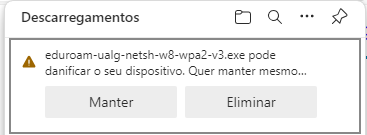
After the previous step, you should click twice on the downloaded file e autorize its execution. If the installation is complete the following message should appear on your screen.
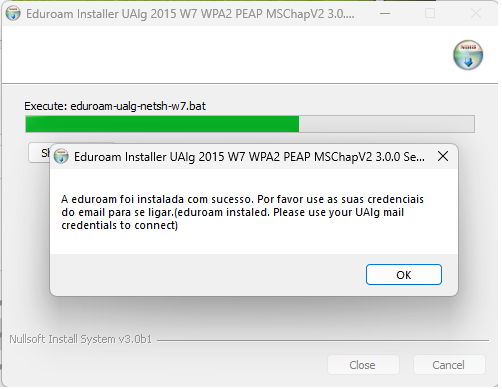
If this message appears, you select the option "This program was correclty installed".

Here you should fill with your email "username@ualg.pt" and your password. Click "OK" and after some time you should receive a message that you are connected to the UAlg Network. When connected to eduroam the network connections icon should look similar to the pictures below.
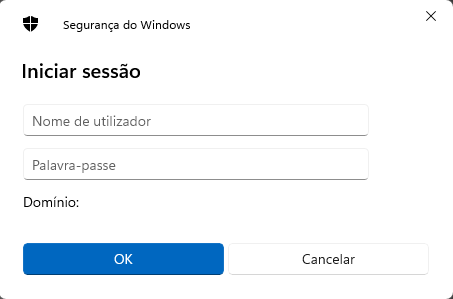
|
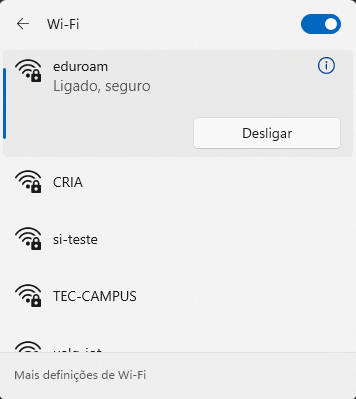
|
Download the profile.
Go to the computer settings and then profiles. You should see the downloaded profile ready for install
Click and follow the prompts to install the certificate.
Make sure that you enter your UAlg email and correct password.
Go to the WI-FI settings and connect to eduroam and you should get access to the network.
If it doesn't work, redo all the steps and make sure that your email and password are correct.
Ubuntu (tested in 8.10, 11.10 e 14.10), Fedora (tested from 10 to 14), CentOS, Redhat, using NetworkManager
1. Download the certificate.
2. Select eduroam wireless network from the list of available networks.
3. Fill the fields as the image below. The image is taken from Ubuntu 14.10, but the fields should look very similar across different versions.
WARNING: You must choose PEAP and MsCHAPv2. The certificate should be ualg-eduroam-ca-2014.der
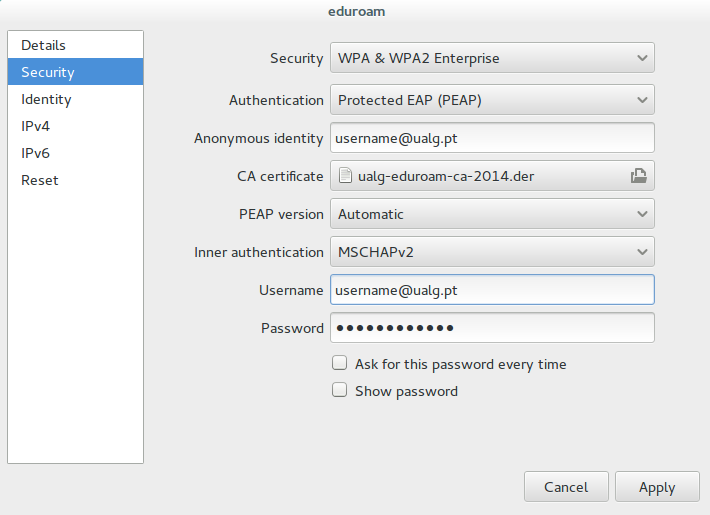
username@ualg.pt is your UAlg email.
Tested in Artix Linux 5.19.10 / 6.0.1 with NetworkManager 1.40.0-1 and Arch Linux 6.0.12 with NetworkManager 1.40.8-1
1. Download the certificate. Save it in a safe directory because you will need to keep it as long as you use eduroam.
2. Open a terminal and execute the command:
$ nmcli con add type wifi con-name eduroam ssid eduroam
3. Once the connection is created it is necessasry to configure the authentication via the command:
$ nmcli con edit id eduroam
Where it should start the nmcli prompt, where you shoud put:
nmcli> set ipv4.method auto
nmcli> set 802-1x.eap peap
nmcli> set 802-1x.phase2-auth mschapv2
nmcli> set 802-1x.identity axxxxx@ualg.pt
nmcli> set 802-1x.anonymous-identity axxxxx@ualg.pt
nmcli> set 802-1x.password ********
nmcli> set 802-1x.ca-cert /home/user/Certs/ualg-eduroam-ca-2014.der
nmcli> set wifi-sec.key-mgmt wpa-eap
nmcli> save
nmcli> quit
Replacing axxxxx@ualg.pt with your UAlg email address, and ******** with your password.
Also replace /home/user/Certs/ualg-eduroam-ca-2014.der with the absolute path to the certificate you just downloaded in the first step.
4. Lastly, activate the connection:
$ nmcli con up eduroam
You should receive a success message.
Examples shown are from a Huawei P10 Lite and a Google Pixel 6a
The next step is to install the certificate
Some phones like Huawei P10 will automatically ask to install the certificate after the download. If that is your case, make sure to give it the name eduroam1 and mark it as a WI-FI certificate.

If nothing happens in your phone after the download, go to 
Then select the downloaded certificate. If you can't select the certificate, repeat the same steps but with this certificate format instead. If it doesn't work too, you can also try the crt format or the cer format.
And give it the name eduroam1
Go to 

Finally click Connect and wait a few seconds. If every step was done correcly, you should see connected below the eduroam network.
Download the profile
If you have a Apple Watch connected, click iPhone/iPad
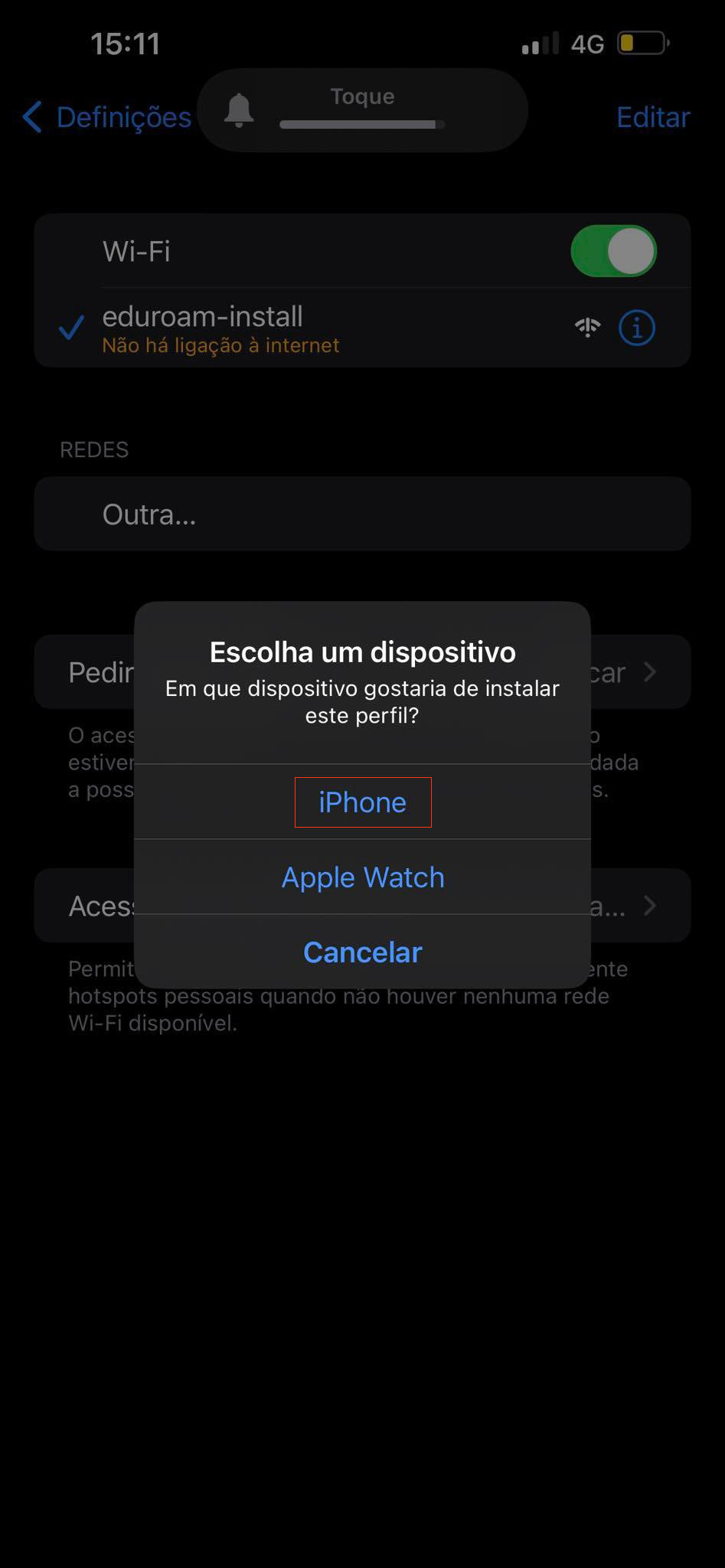
Make sure the profile is downloaded and click close
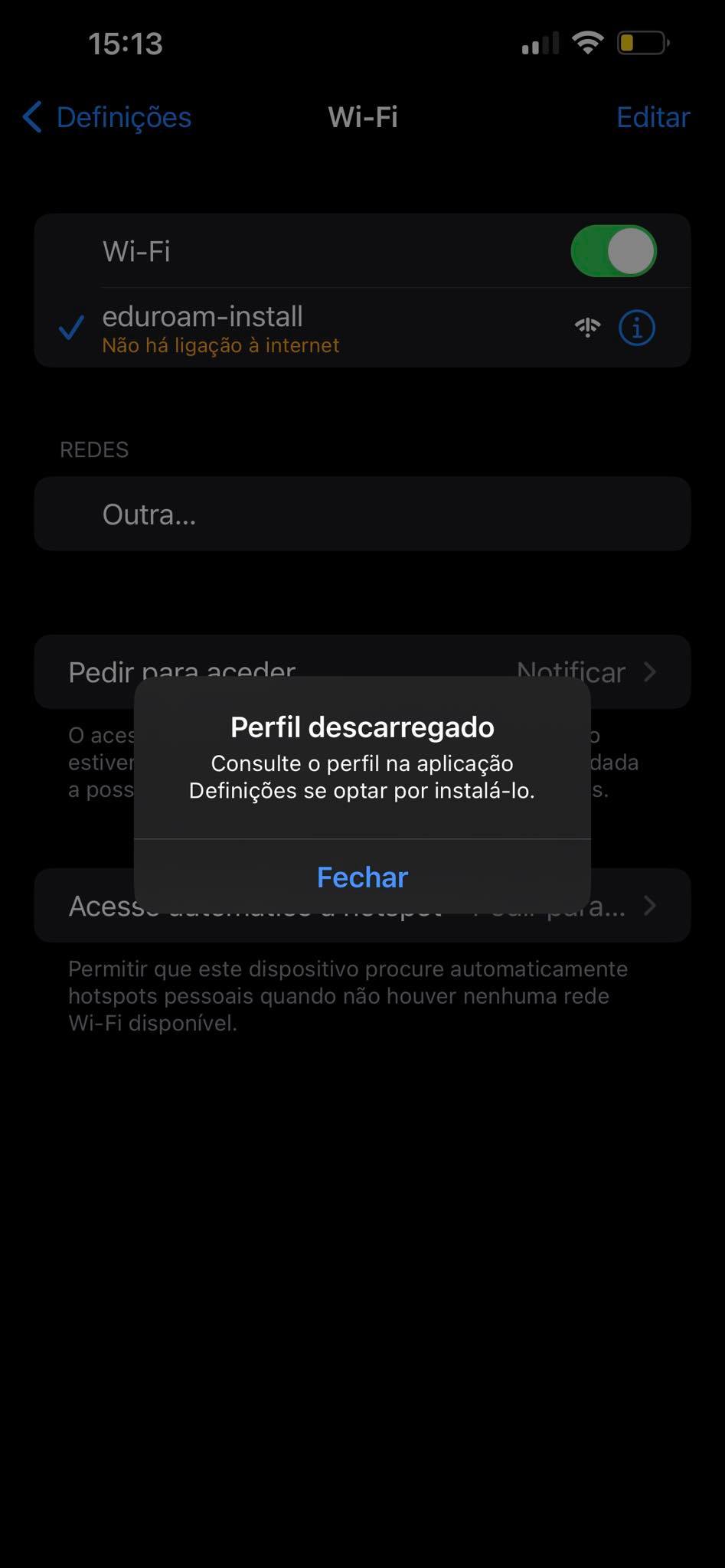
Go to the settings and click on profile
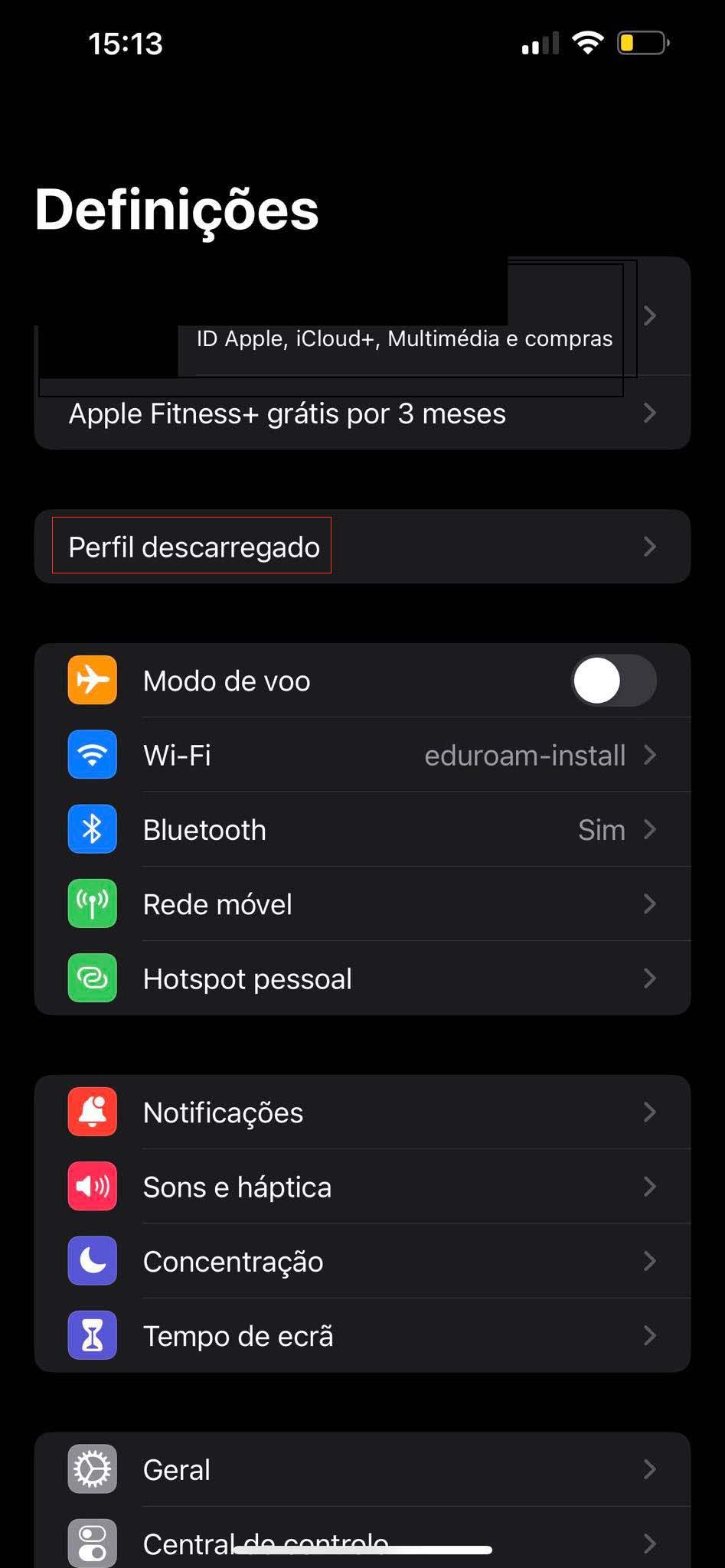
Click install ...
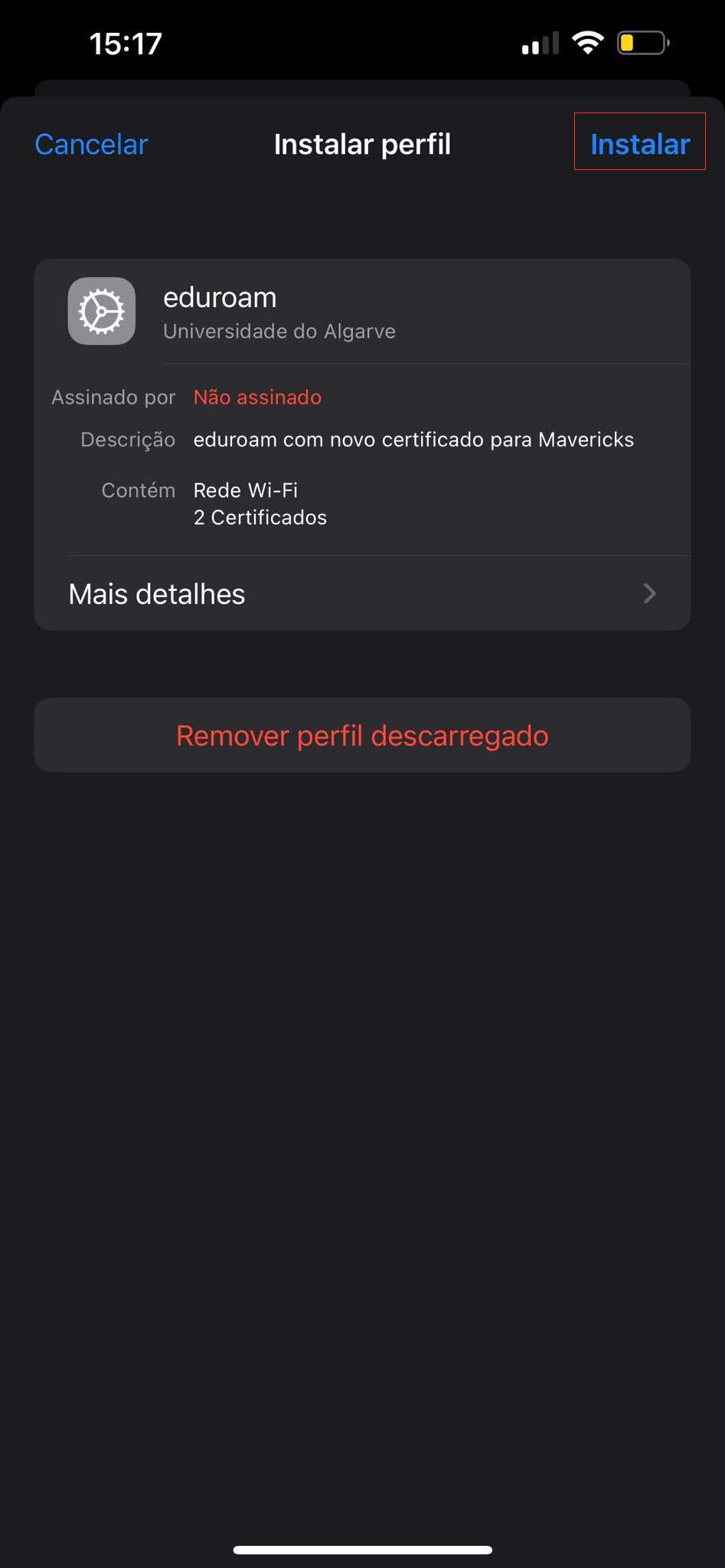
... and then install again. At this step you might need to input your phone pin
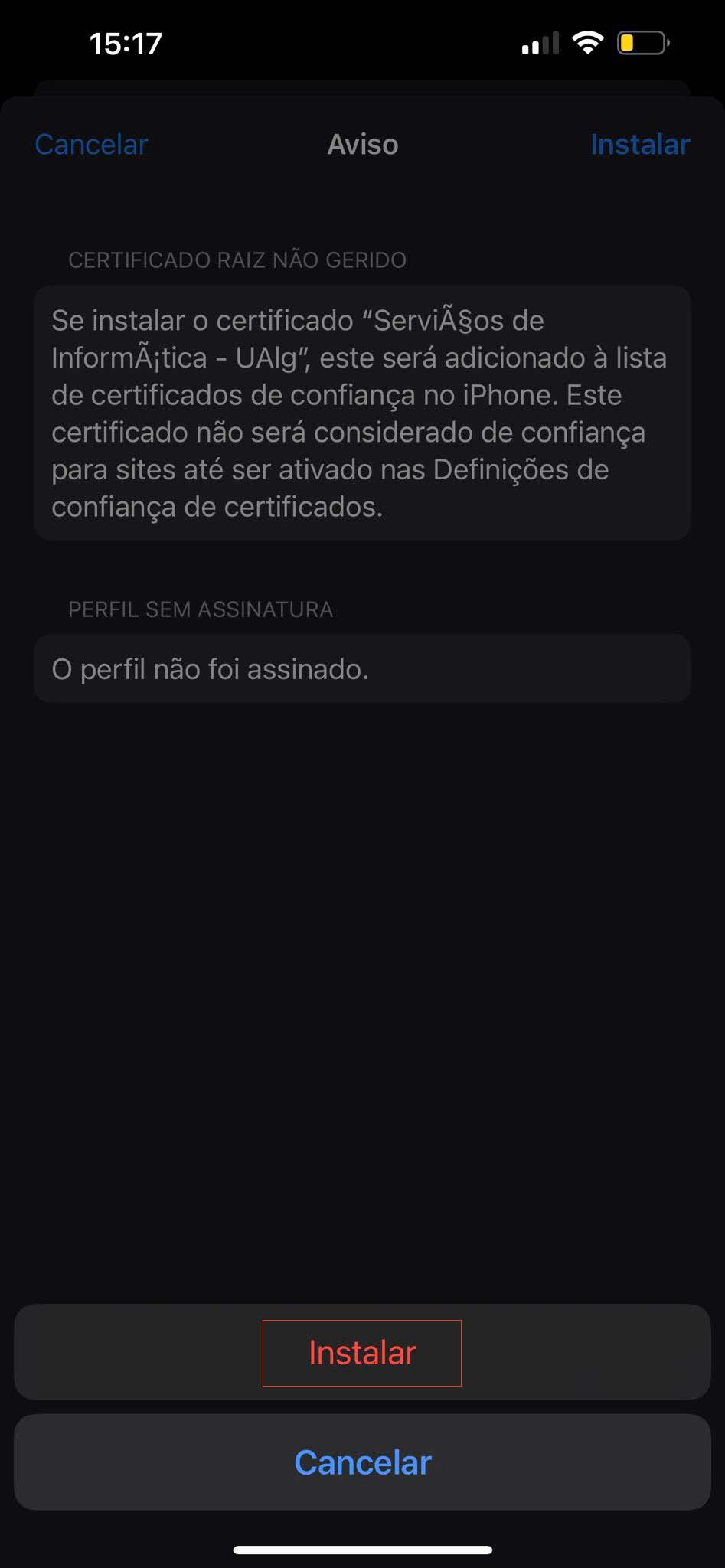
Fill the field with your UAlg email (for students axxxxx@ualg.pt replacing xxxxx with the student number) and press next
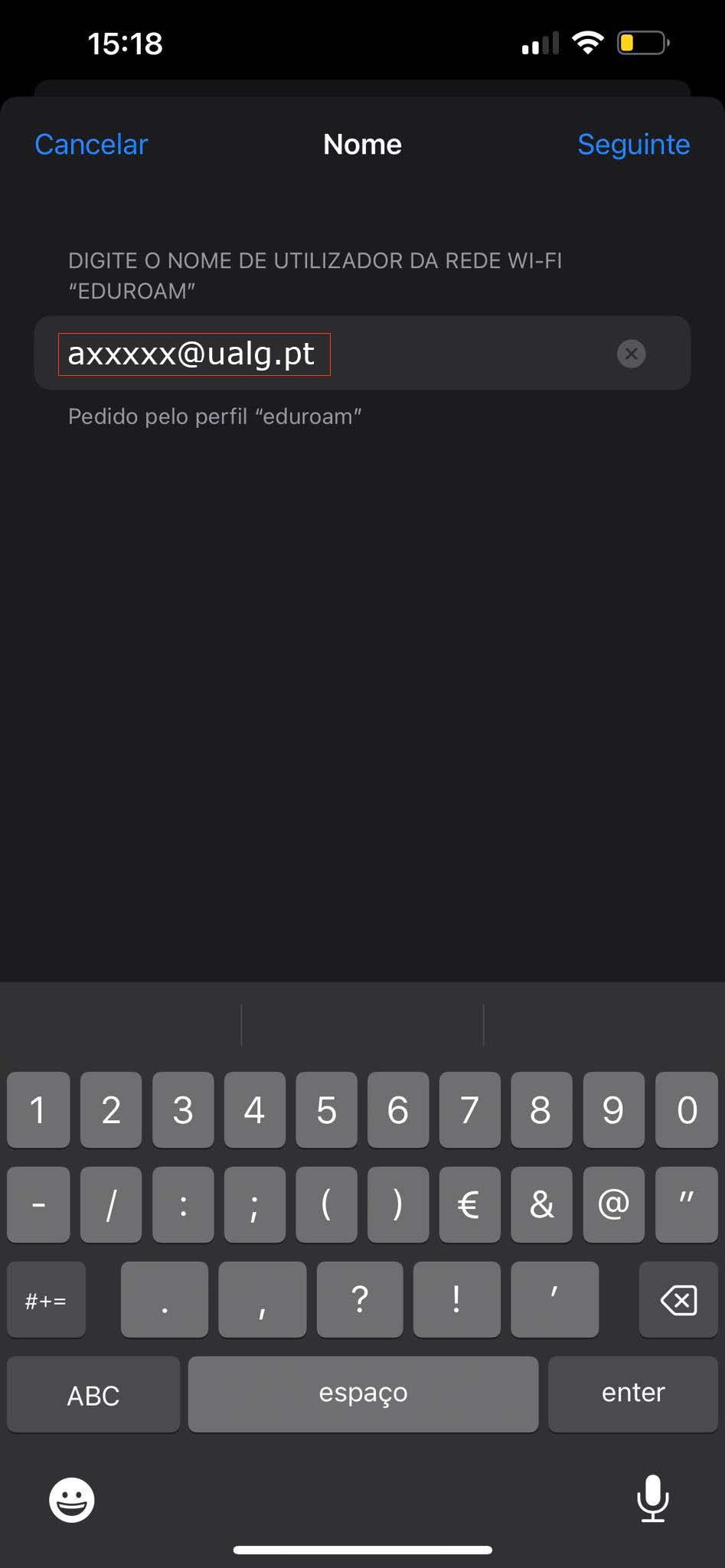
Next insert your UAlg password and click connect
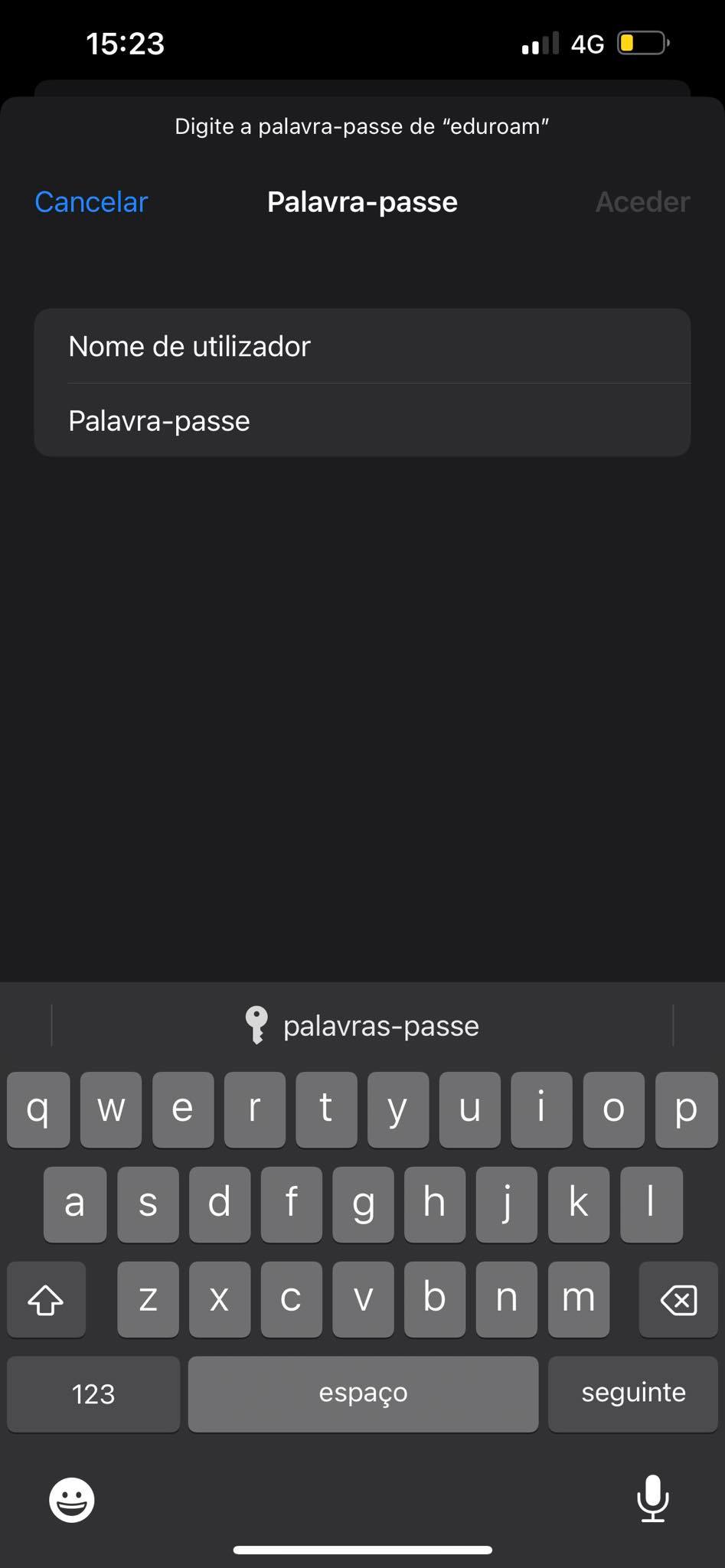
After all these steps, the iPhone should be connected to eduroam. Check in the WI-FI settings if is the case. If is not you can click in eduroam and it should connect to the network.
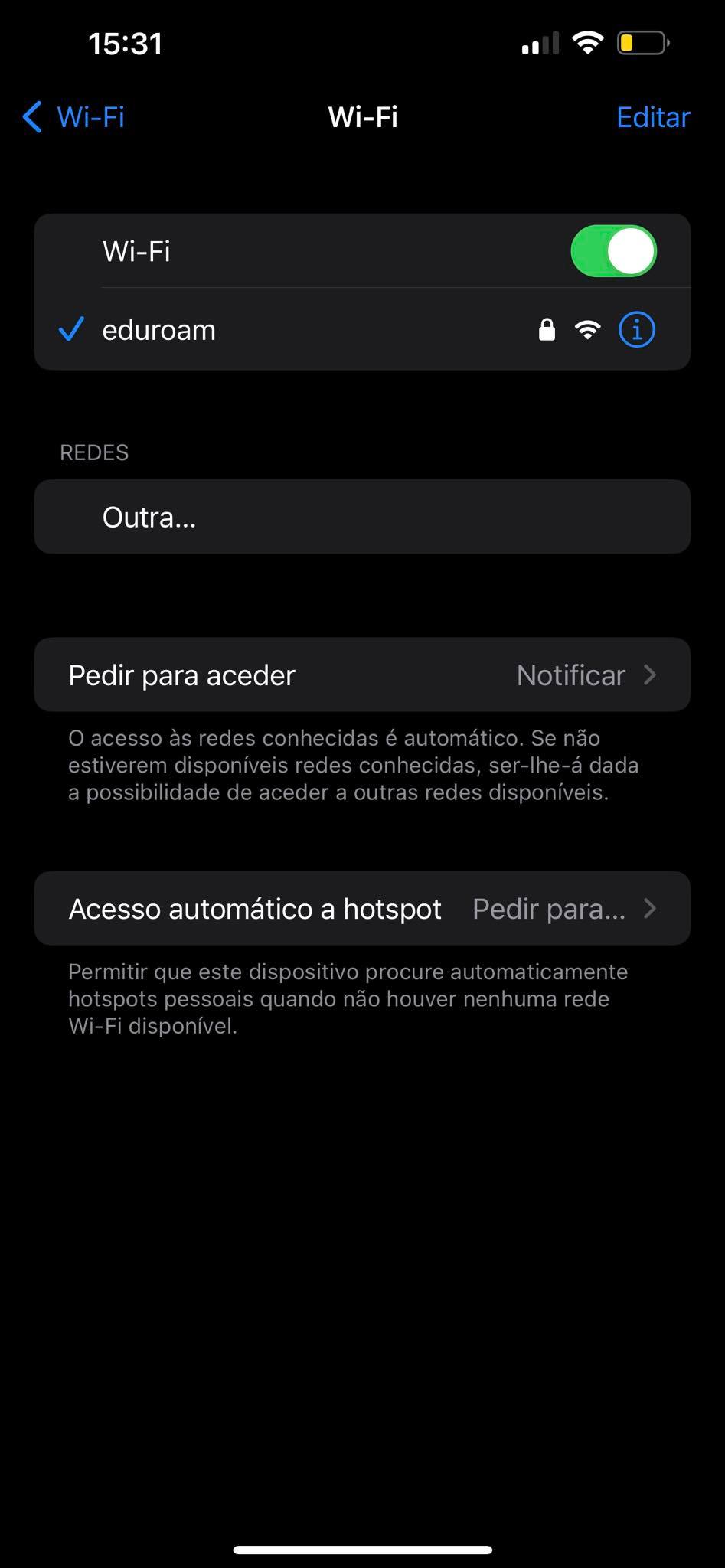
Download the certificate. In the example below we saved the certificate in the Downloads folder.
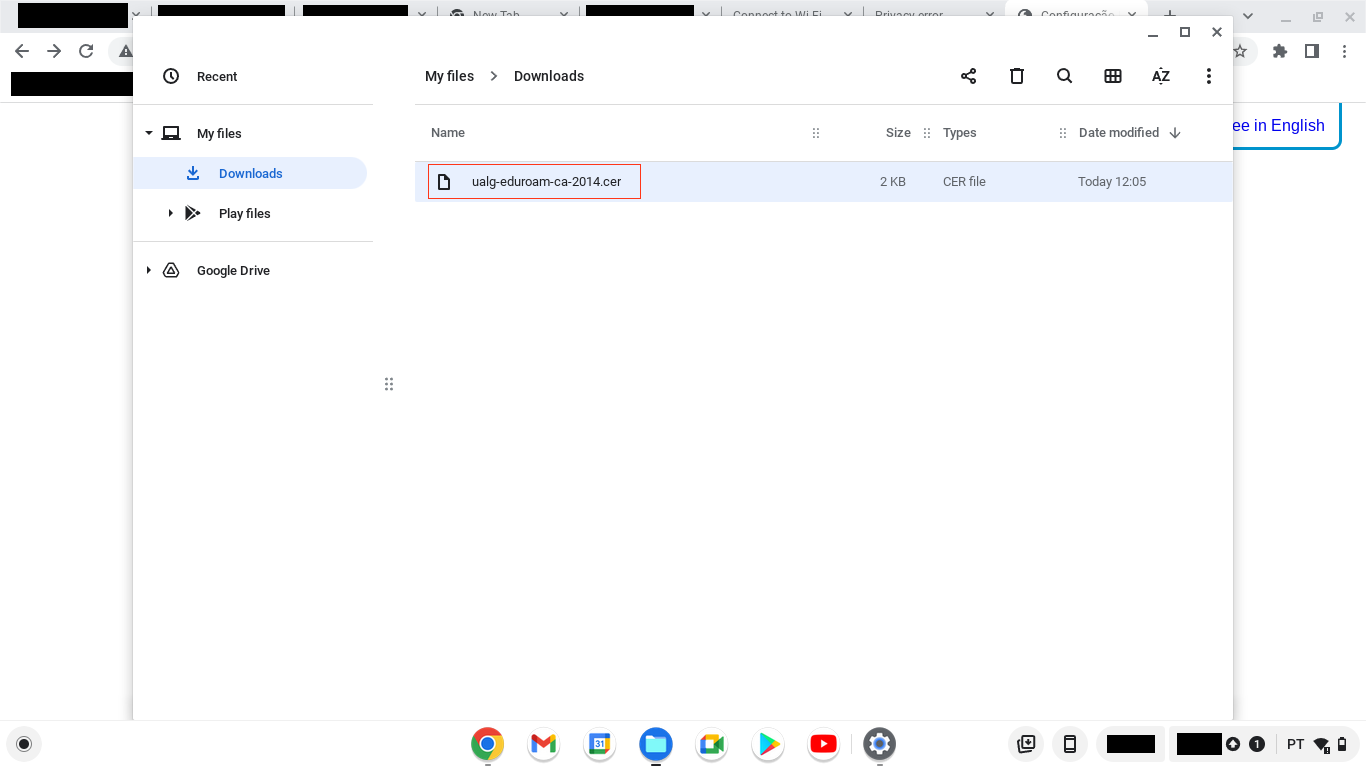
Next open the Chrome browser and go to the settings. Then search for "certificate" and select Security.
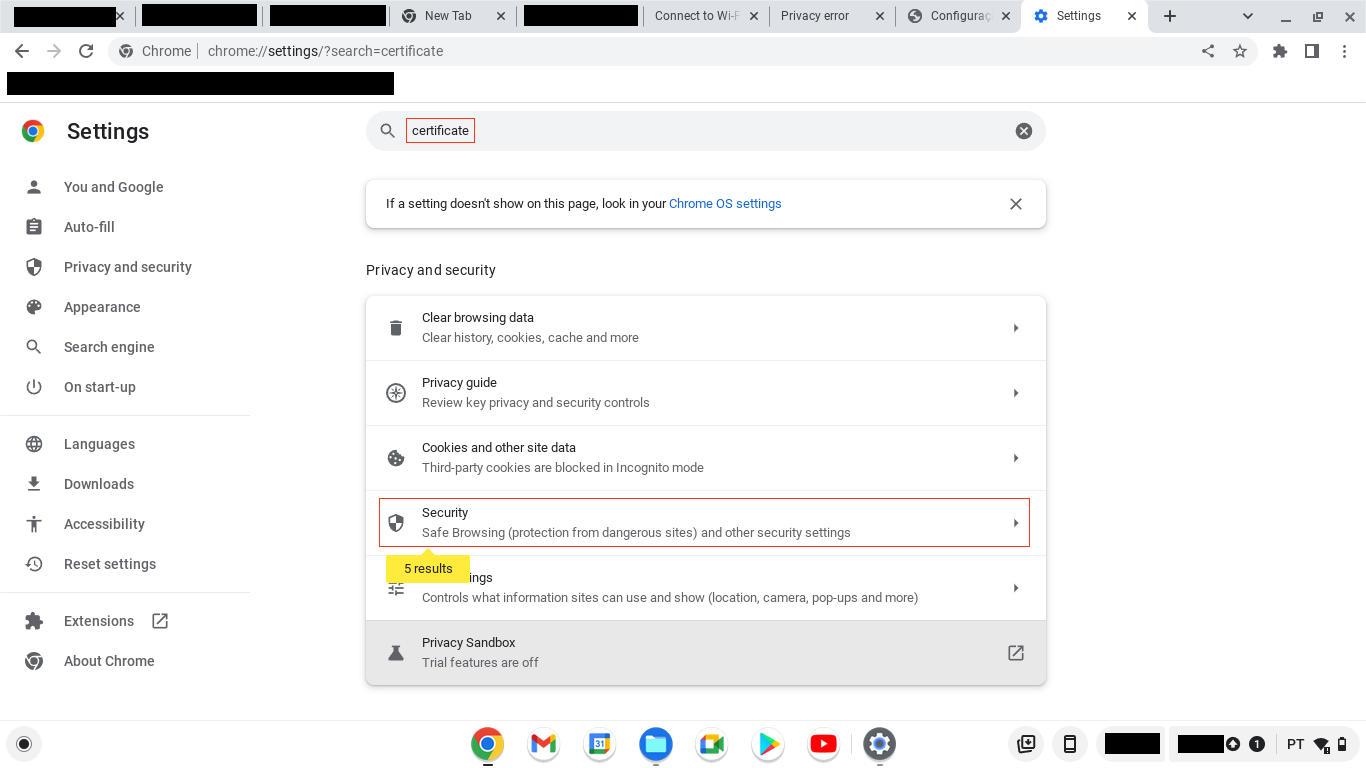
Select Manage certificates ...
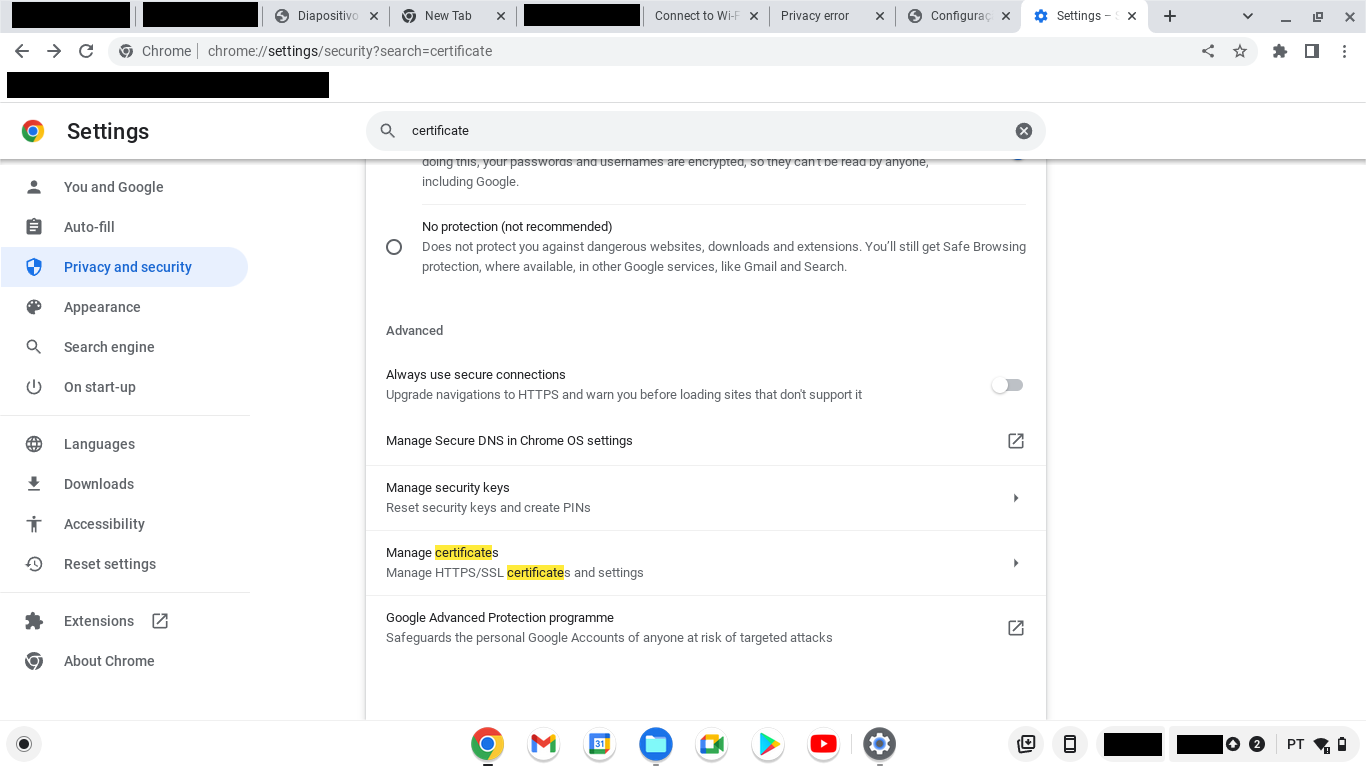
Click Authorities and then select the certificate downloaded in Import ...
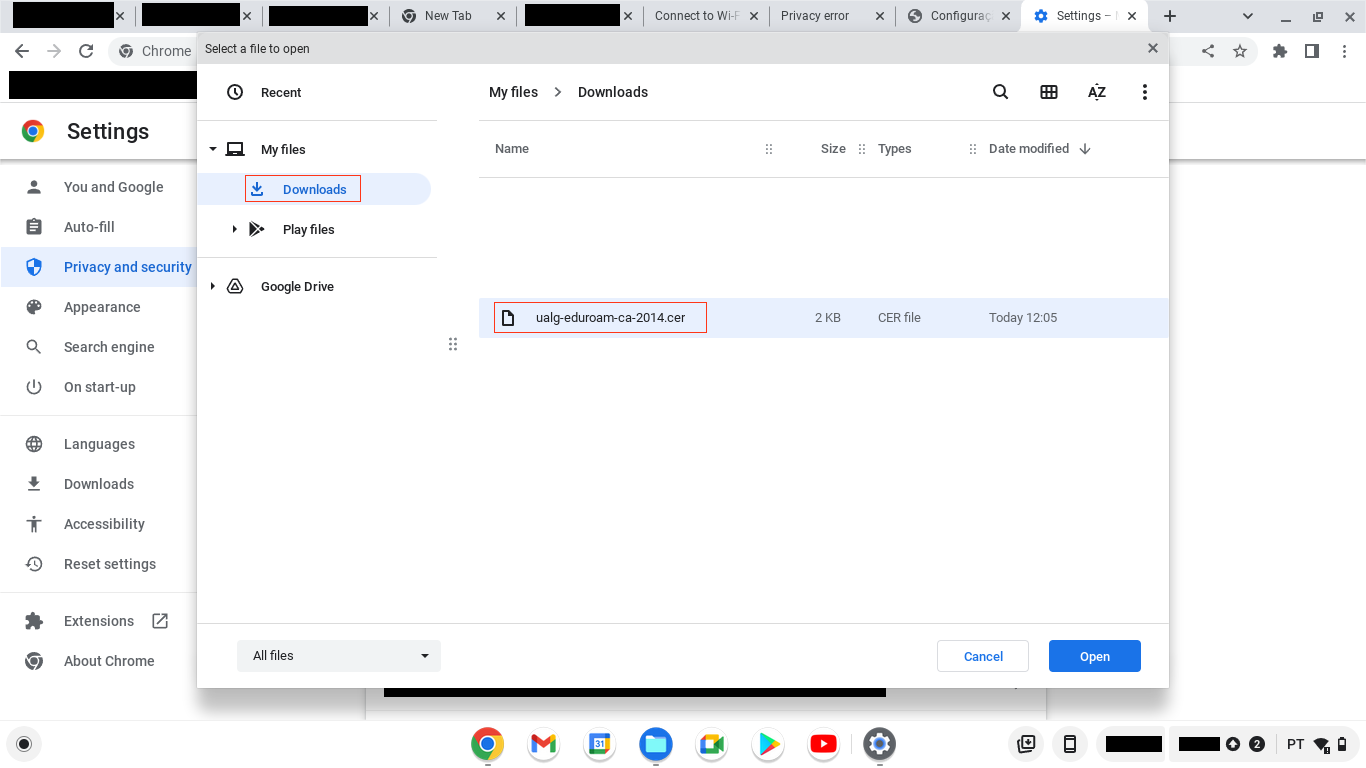
... check the 3 options and click ok.
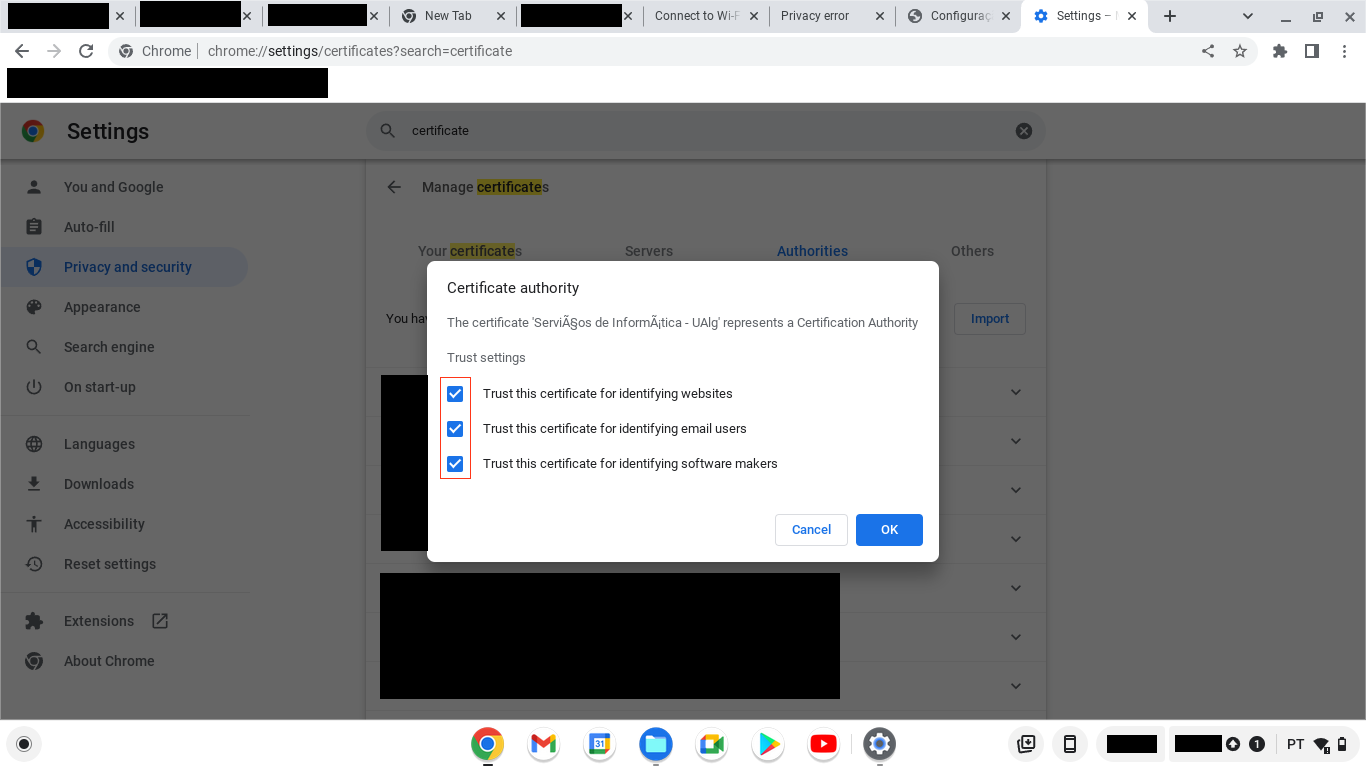
Connect to the eduroam and fill the following fields:
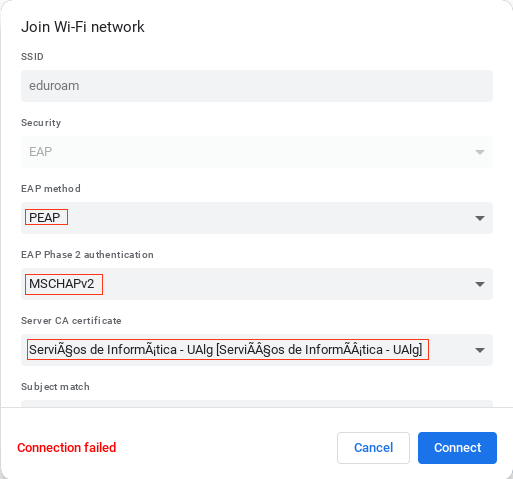
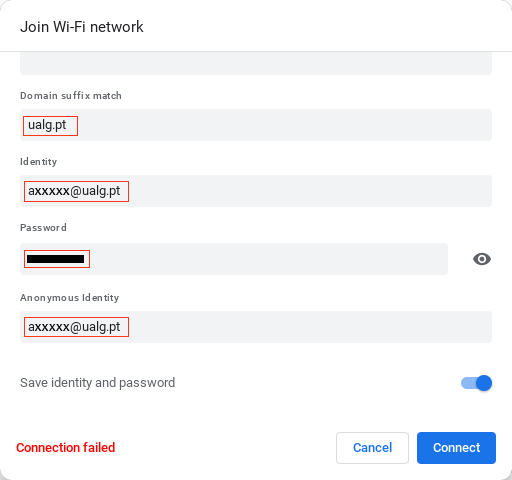
If your device is not found in the list of supported devices by the IT services, you can choose to configure it manually, taking however full responsibility through out the process.
You should install the most recent certificate, using the most suitable format for you operating system, DER (windows), PEM (android and others) or CRT (android and others) or CER (windows phone), and select it in the configuration.
Only this way is guaranteed that your credentials are sent to the correct server and not to a pirate website.
Some technical notes:
The use of protocols (WPA2, TTLS, PEAP, etc) needs to be complied at a national level in order to roaming to work properly, that is, if you visit another Portuguese University you should be able to connect without changing the configuration.
This is valid at a worldwide level for universities that comply, however the protocols used can be slightly different, requiring to change some settings (WPA to WPA2, etc).
When you enter with your UAlg account outside UAlg, your credentials are sent to our server encrypted to authenticate, passing through many servers, and because of that its very important the installation and confirmation of the server certificate.